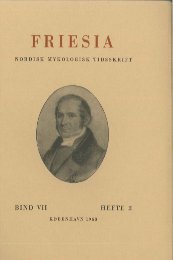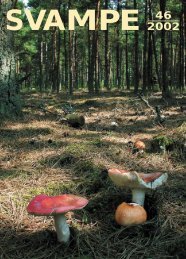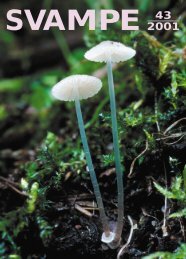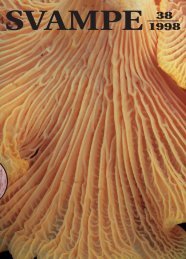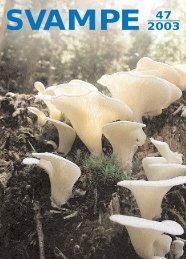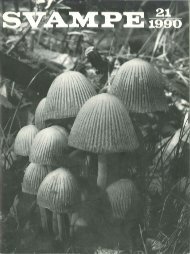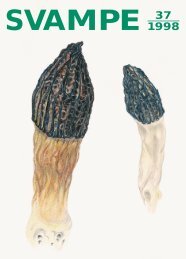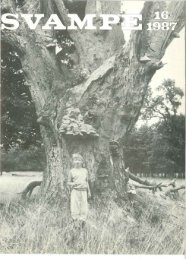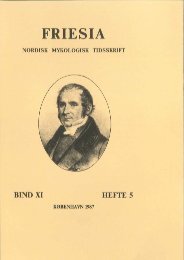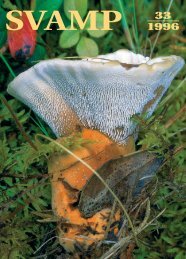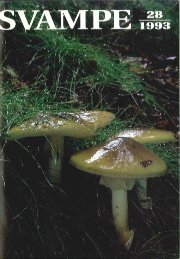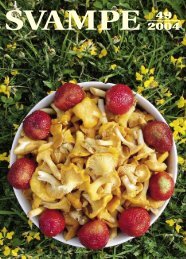Friesia X, 4-5
Friesia X, 4-5
Friesia X, 4-5
You also want an ePaper? Increase the reach of your titles
YUMPU automatically turns print PDFs into web optimized ePapers that Google loves.
- 236 -<br />
found C. maritima to be the most frequent species. The ratio between<br />
the number of spores of C. maritima and C. trifurcata was 10: 1 and<br />
8: 1 in North Carolina and Georgia respectively.<br />
Remispora stellata and Ceriosporopsis halima show high rankings<br />
in Table 1, despite the faet that both species normally form perithecia<br />
in the wood and are thus difficult to demonstrate. In the case of the<br />
latter species these findings agree with those of JOHNSON & SPARROW<br />
(1961) who considered C. halima as being one of the most widespread<br />
and common marine fungi. In general the first 12 species in<br />
Table 1 ean be regarded as being so frequent that all will be found<br />
during a brief collection tour under suitable conditions (see Table 3) ,<br />
whereas the species represented by only 1-4 collections are relatively<br />
rare.<br />
The frequency values are based on the presence of perithecia,<br />
and increased knowledge of the occurrence of imperfect spore forms<br />
could thus change the order of succession. In addition a possible<br />
dependence upon the substrate would also change the ranking of<br />
species in Table 1. None of the species of which a representative<br />
number of collections is present appears to show any specific preference<br />
for a particular species of wood. The majority grew on both<br />
deciduous and coniferous wood.<br />
A certain degree of substrate specialization was observed in<br />
Amylocarpus encephaloides (23 colleetions) and Halosphaeria appendiculata<br />
(11 coll.) which were recorded only on deciduous wood and<br />
in Corollospora tubulata (30 coll.) , Crinigera sp. (14 coll.), and<br />
Remispora pilleata (14 coll.) recorded only on coniferous wood. Corollospore<br />
comata (66 coll.) must be assumed to grow chiefly on softwood<br />
since only one collection out of a total of 66 colleetions was<br />
from deciduous wood. These observations are in agreement with the<br />
substrate list given by KOHLMEYER & KOHLMEYER (1964-69). It should<br />
also be noted that Crinigera sp. (maritima?) is not treated by the<br />
ab ove mentioned authors, and that the type was deseribed from Quercus<br />
and Fucue vesiculosus (SCHMIDT 1969).<br />
A further knowledge of the dependence of these species on the<br />
substrate could be of value, since a choice of correet test fungi is of<br />
considerable importance in the laboratory testing of specific wood<br />
preservatives under marine conditions. These test species should be<br />
seleeted according to their frequency of occurrence in the area in<br />
which the wood is to be used, according to their destructive ability<br />
and according to their specific association to the wood type concerned.



